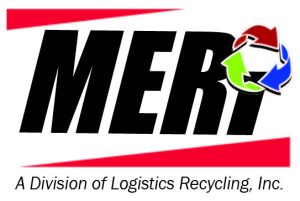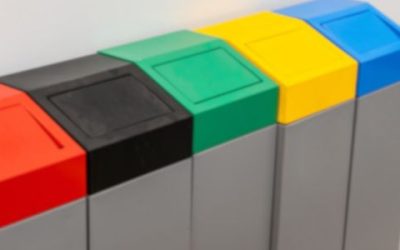Ever wonder what happens to medical waste after it leaves your facility?
In the video below, you can follow a MERI driver, Paul Blaser. We’ve sped up his day to a little over two minutes.
Day in the Life of a Medical Waste Driver
This video will give you a better idea of what happens to medical waste as it moves throughout the cradle to grave process at our licensed treatment facility.
Usually, our MERI drivers will have 8-12 stops on their daily route, collecting medical waste. On this particular day, MERI driver Paul will go to various facilities, including a hospital, clinic, skilled nursing center and funeral home.
Before he leaves to begin his route, Paul will grab the biohazard containers he’ll need as well as the liners and lids for them. He’ll also bring along a few cases of sharps containers. If our customers have loose sharps, they can place those sharps into one of these containers before they go into the biohazard bins.
Coivd-19 Precautions
Because of Covid-19, throughout the day, Paul will take extra precautions to sanitize his traveling workspace. He’ll wipe down his hands, I-Pad and steering wheel.
Before entering a facility, he’ll also check if there are any special instructions and will wear a face mask.
Once inside, he’ll swap out fresh containers for full ones. He makes sure all bags are tied, and lids are sealed, before they are secured on the truck for transport.
Feel free to reach out to our MERI drivers ahead of time if you:
- Need an extra biohazard container so they can have one on the truck for you.
- Have an item that needs special attention, such as a piece of equipment that accidentally was put in the bag
- Know ahead that your bag contains Covid-19 waste
MERI drivers also appreciate it when the medical waste bag is tied up and ready to go, as shown in this poster.
Electronic Manifest Keeps Track of Process
Paul uses MERI’s Genesis electronic manifest system to record waste that is collected for destruction. At each stop, Paul records the number of containers and an estimate of the weight. He’ll confirm and record the actual weight on a licensed scale when he returns to the plant.
Many MERI customers sign an agent letter that verifies it is OK for a MERI driver to sign on their behalf if they are not available when we come to collect their waste. They’ll get an email, with a time and date stamp, of when their infectious waste was collected and transported away.
Waste is Disinfected and Shredded
Once back at the plant, Paul weighs the waste and records it on his manifest.
It is then sorted before heading into MERI’s microwave processor. There, the material is shredded, injected with steam, and microwaved, with the temperature raising to over 200 degrees Fahrenheit. The entire process takes place inside of a sealed system.
When it comes out at the end, it looks like confetti. Its original volume has been reduced by 80%. Once the compactor is full, it is pulled and taken to the landfill. This is the final step in the manifest process. It moves to closed, and the customer receives an email noting the process is now complete.
Clean Containers Last Step
At the end of his day, Paul will wash, disinfect and dry all containers. He’ll put them in the clean room so that they can be ready for his next day’s route.
We hope this day in the life of our driver gives you a better idea of what it’s like to be a medical waste driver. In addition, you now have a birds eye view of the cradle to grave medical waste destruction process.
If you have any questions, don’t hesitate to give us a call at 608-257-7652 or email us at info@meriinc.com
###



